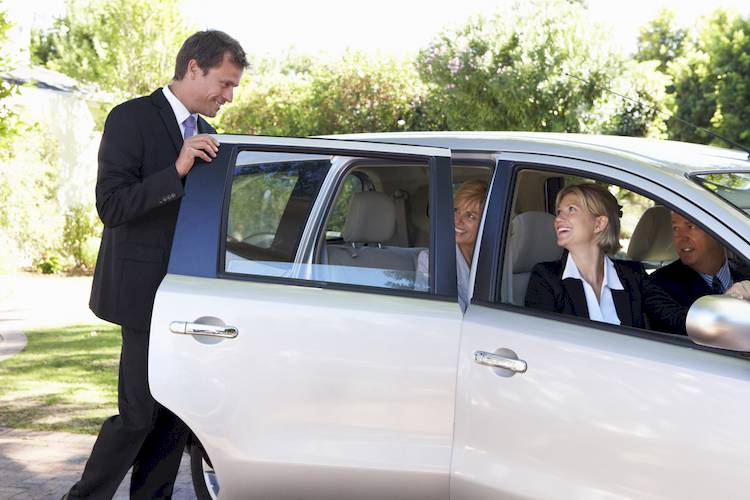

While the small state of Connecticut only has two car pool lanes, these lanes aid thousands of drivers every single day. Car pool lanes are lanes in which vehicles with multiple occupants can drive, but cars with only one occupant cannot.
Car pool lanes encourage drivers to share their commutes with fellow workers, which helps get cars off the road. Fewer cars on the road means less traffic, fewer carbon emissions, and reduced road damage (and, as a result, less taxpayer dollars needed for road repairs). Car pool lanes generally travel at a standard freeway speed, even during peak rush hours, when the rest of the freeway is stuck in bumper to bumper traffic. These lanes, like all traffic laws, have rules that should be obeyed if you plan on using them.
By using the car pool line, drivers can save lots of time on their daily commute, and decrease the number of hours that they spend sitting in their cars. Car pool lane rules vary from state to state, so you should always familiarize yourself with your local road rules. Thankfully, the Connecticut car pool lane rules are very straightforward and easy to both learn and follow.
Where are the car pool lanes?
Connecticut has car pool lanes on two of its major freeways: I-84 and I-95. The car pool lanes cover more than 15 miles on each of these freeways. On both freeways, the car pool lane is located all the way to the left of the freeway, adjacent to the oncoming traffic.
Occasionally the car pool lane has exits on the left hand side, which allows drivers to exit the freeway at their destination without ever leaving the car pool lane. Most of the time, however, you will have to merge to the furthermost right lane in order to exit the freeway with the rest of the traffic.
Car pool lanes are signaled with signs on the left side of the road that will either say car pool or HOV (High Occupancy Vehicle). The lanes are also marked with road paint in the shape of diamonds.
What are the basic car pool lane rules?
In Connecticut, vehicles must have a minimum of two occupants in order to qualify for the car pool lane. Even though car pool lanes were designed to encourage workers to commute with fellow employees, there are no restrictions on who the second occupant in the vehicle is. Even if you are simply driving with your child, you can legally drive in the car pool lane.
Car pool lanes in Connecticut are open 24 hours a day, and are never available to vehicles with only a single occupant. That said, car pool rules sometimes change, so you should always observe the signs next to the car pool lane to make sure you know the current rules.
There are stretches of car pool lanes where merging is prohibited. These sections are marked by solid white lines between the car pool lane and the adjacent all-access lane. When this line is solid, you cannot enter or exit the car pool lane. When the line is fractured, you are free to merge into or merge out of the car pool lane. The purpose of the no-merge areas is to maintain the flow and high speed of the car pool lanes.
What vehicles are allowed in the car pool lanes?
In addition to traditional passenger vehicles with at least two occupants, motorcycles are also allowed in car pool lanes, even if they only have one rider. This rule exists because it is much safer for motorcycles to be traveling in the car pool lane – where they can drive at standard freeway speeds – than to be in stop and go traffic.
Unlike in some other states, Connecticut does not allow alternative fuel vehicles to operate in the car pool lane with only one occupant. However, more and more states are adopting this exemption, so if you drive an alternative fuel vehicle you should keep your eye open, as the legislature may change in the future.
Not all vehicles carrying at least two occupants can legally drive in the car pool lane. If your car cannot safely or legally drive at a high freeway speed, it is not allowed in the car pool lane. For instance, RVs, semis, trucks towing large items, and motorcycles with trailers are prohibited from the car pool lane. The exceptions to this rule are emergency vehicles, city buses, and operating tow trucks, which are exempt from car pool rules.
What are the car pool lane violation penalties?
In Connecticut, the penalties for violating the car pool lane rules can vary depending on the freeway, and the time of day. The base penalty is $92, though it is often a bit more than that. Drivers who have broken the car pool lane rules multiple times are subject to larger fines, as well as possible license suspensions. If you are driving in the car pool lane with multiple occupants, but a vehicle that should not be in the lane (such as an RV), you will likely receive a warning, rather than a ticket, since that rule is not explicitly stated on the car pool road signs.
Drivers who illegally merge into or out of the car pool lane are subject to the standard illegal solid line crossing tickets.
Anyone who attempts to trick a police or highway patrol officer by placing a dummy, mannequin, or cut out in their vehicle as their second occupant will likely receive a much larger fine, and can possibly face jail time.
Carpooling can save you gas money, as well as a large amount of time. Whether you’re traveling on I-84 or I-95 to work with fellow employees, or simply passing through with friends or family members, you should always take advantage of the car pool lane when you have multiple occupants. As long as you follow the simple rules, you’re good to go.



